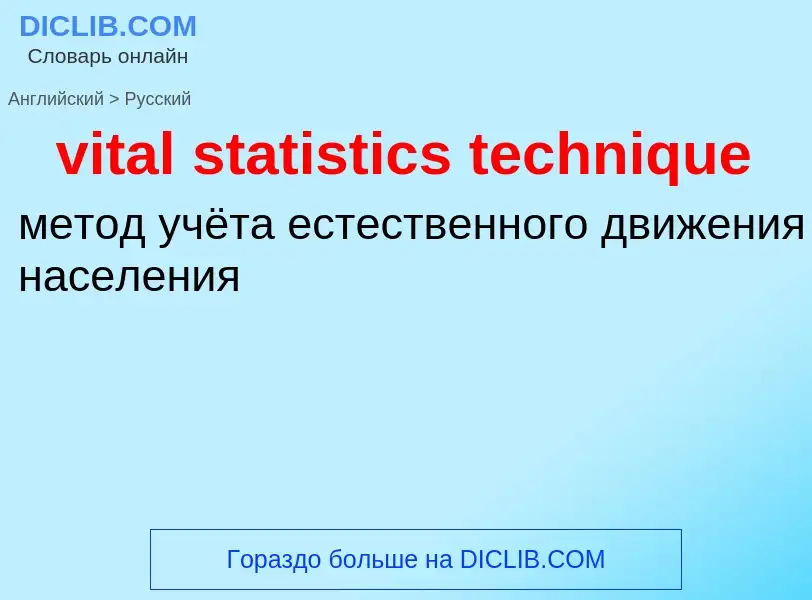Перевод и анализ слов искусственным интеллектом ChatGPT
На этой странице Вы можете получить подробный анализ слова или словосочетания, произведенный с помощью лучшей на сегодняшний день технологии искусственного интеллекта:
- как употребляется слово
- частота употребления
- используется оно чаще в устной или письменной речи
- варианты перевода слова
- примеры употребления (несколько фраз с переводом)
- этимология
vital statistics technique - перевод на русский
[vaitlstə'tistiks]
общая лексика
статистика естественного движения населения
статистика естественного движения населения (рождаемости, смертности, браков)
демографическая статистика
разговорное выражение
объём груди
талии и бёдер женщины
шутливое выражение
объем груди, талии и бедер (женщины)
математика
статистика народонаселения
медицина
статистика населения
[vaitl'sainz]
медицина
основные показатели состояния организма (пульс, дыхание, температура, иногда кровяное давление)
математика
математическая статистика
математика
специалист по математической статистике
Определение
Википедия
Facing Goya (2000) is an opera in four acts by Michael Nyman on a libretto by Victoria Hardie. It is an expansion of their one-act opera called Vital Statistics from 1987, dealing with such subjects as physiognomy, eugenics, and its practitioners, and also incorporates a musical motif from Nyman's art song, "The Kiss", inspired by a Paul Richards painting. Nyman also considers the work thematically tied to his other works, The Man Who Mistook His Wife for a Hat, The Ogre, and Gattaca, though he does not quote any of these musically, save a very brief passage of the latter. It was premièred at the Auditorio de Galicia, Santiago de Compostela, Spain on 3 August 2000. The revision with the cast heard on the album premiered at the Badisches Staatstheater Karlsruhe, Germany, on October 19, 2002. Vital Statistics has been withdrawn. The Santiago version included more material from Vital Statistics. The opera was most recently performed at the 2014 Spoleto Festival USA, located in Charleston, South Carolina.
The expanded opera deals with the elitism and prejudice of various movements in pseudosciences and art criticism, wrapped around a thread of a desire to make a clone of Francisco Goya through use of his long-lost skull, which he hid from the likes of Paul Broca, and which the Art Banker finds under a floorboard in a "degenerate art" gallery in Act II. This skull is the object of numerous fights in the second and third acts, often with one character snatching it from another. The opera is non-realistic in its presentation, with only one through-character, the Art Banker. Indeed, when Goya does appear, it is not the result of cloning, but a purely fantastical device. Four other performers play different roles in each section who are thematically connected. In addition, two actors are called for in non-speaking roles. The Art Banker also speaks narration into a dictaphone, but this was omitted from the studio recording, though the lines are reprinted in the booklet.


.png?width=200)

.png?width=200)
